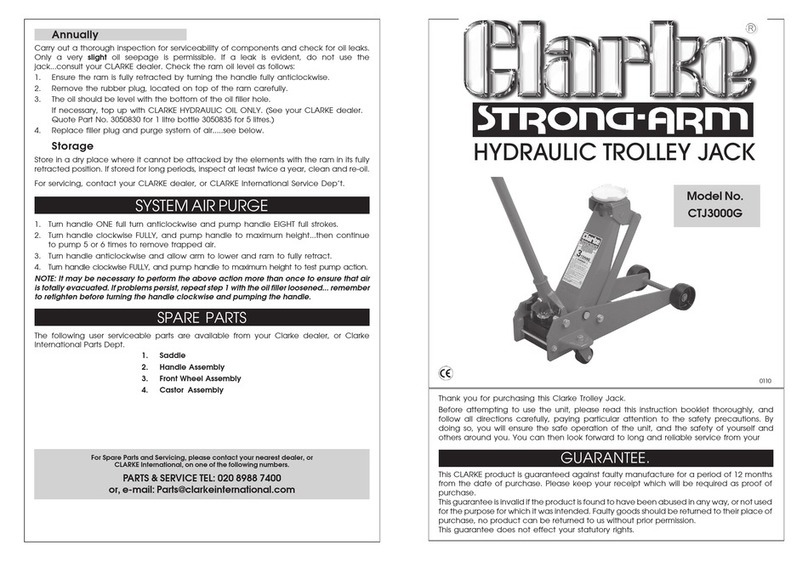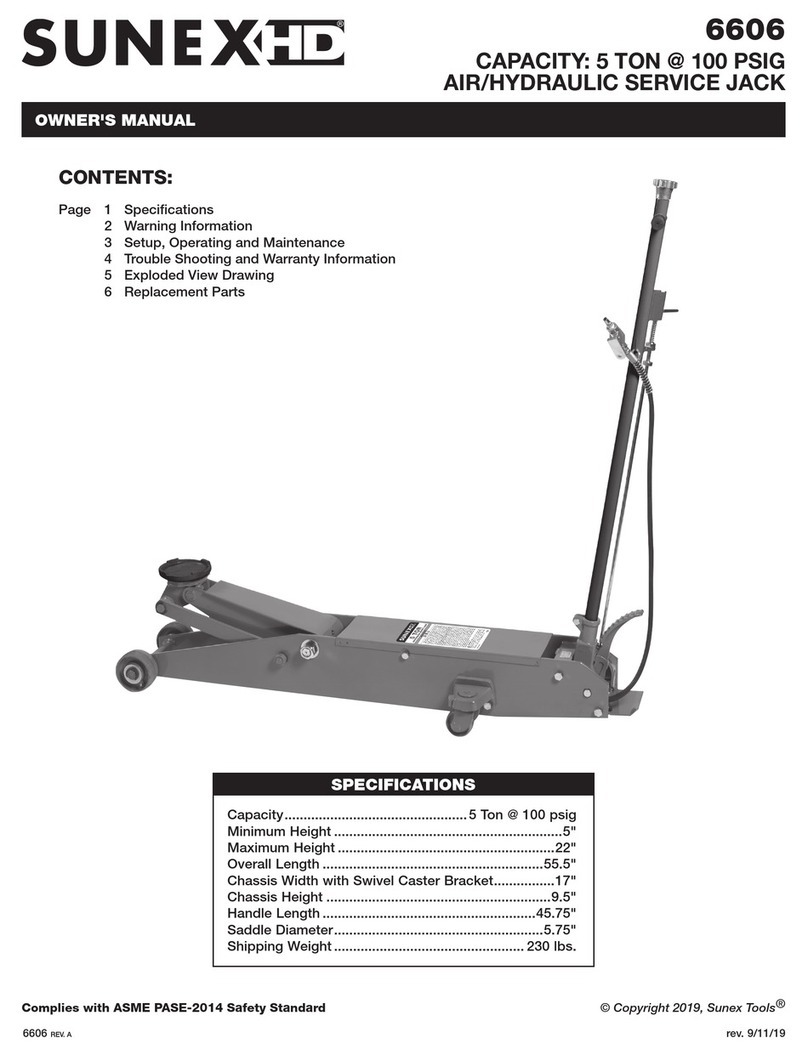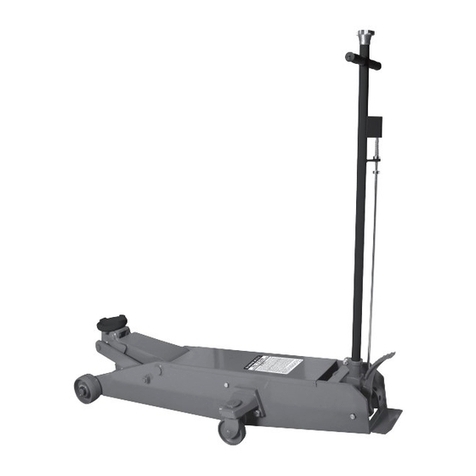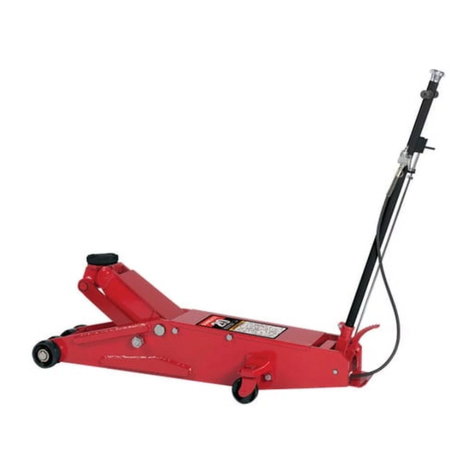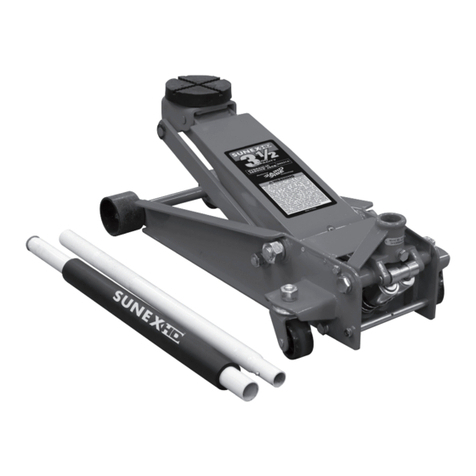
66037JPK 3 Rev. 1/15/20
This is the safety alert symbol. It is used to alert you to
potential personal injury hazards. Obey all safety messages
that follow this symbol to avoid possible injury or death.
IMPORTANT: READ THESE INSTRUCTIONS BEFORE OPERATING
BEFORE USING THIS DEVICE, READ THIS MANUAL COMPLETELY AND THOROUGHLY, UNDERSTAND ITS OPERATING PROCEDURES,
SAFETY WARNINGS AND MAINTENANCE REQUIREMENTS.
It is the responsibility of the owner to make sure all personnel read this manual prior to using the device. It is also the responsibility of the
device owner to keep this manual intact and in a convenient location for all to see and read. If the manual or product labels are lost or not
legible, contact Sunex for replacements. If the operator is not fluent in English, the product and safety instructions shall be read to and
discussed with the operator in the operator's native language by the purchaser/owner or his designee, making sure that the operator
comprehends its contents.
THE NATURE OF HAZARDOUS SITUATIONS
The use of portable automotive lifting devices is subject to certain hazards that cannot be prevented by mechanical means, but only by the
exercise of intelligence, care, and common sense. It is therefore essential to have owners and personnel involved in the use and operation
of the equipment who are careful, competent, trained, and qualified in the safe operation of the equipment and its proper use. Examples of
hazards are dropping, tipping or slipping of loads caused primarily by improperly securing loads, overloading, off-centered loads, use on
other than hard level surfaces, and using equipment for a purpose for which it was not designed.
METHODS TO AVOID HAZARDOUS SITUATIONS
• Read, study, understand and follow all instructions before operating this device.
• Inspect the jack stands before each use. Do not use jack stands if damaged, altered, modified, in poor condition, or unstable due to
loose or missing components. Make corrections before using.
• Wear eye protection that meets ANSI Z87.1 and OSHA standards (users and bystanders).
• Do not use jack stands beyond the pair's rated capacity. Do not shock Load.
• Do not crawl under the vehicle while lifting vehicle or placing or removing the jack stands.
• Use as a matched pair only.
• Maximum load capacity per matched pair shall not exceed the rated capacity of the individual stand.
• Use only on a hard level surface capable of supporting the load.
• Stands are to be used in matched pairs to support one end of a vehicle only. Do not simultaneously support both ends
or one side of a vehicle.
• Apply the emergency brake and put the gear shift lever in park or in gear if a manual shift transmission, and chock the tires that will not
be lifted off the ground.
• Ensure both stands are set at same height and locking pawls are fully engaging the support column's teeth.
• Consult the vehicle manufacturer for the proper frame support locations.
• Center load on saddle. Do not use saddle lugs to support the load.
• Check the stands for solid contact with the ground and vehicle. Make sure the stands' locking pawls are fully engaging the support
columns' teeth.
• Do not use (or modify) this product for any other purpose than that for which it was designed without consulting the
manufacturer's authorized representative.
• Failure to heed these warnings may result in serious or fatal personal injury and/or property damage.
WARNING: This product can expose you to chemicals including nickel which is known to the State of California to cause cancer and birth
defects or other reproductive harm. For more information go to www.P65Warnings.ca.gov.
CONSEQUENCES OF NOT AVOIDING HAZARDOUS SITUATIONS
Failure to read this manual completely and thoroughly, failure to understand its OPERATING INSTRUCTIONS, SAFETY WARNINGS,
MAINTENANCE INSTRUCTIONS and comply with them, and failure to comply with the METHODS TO AVOID HAZARDOUS SITUATIONS
could cause accidents resulting in serious or fatal personal injury and/or property damage.
WARNING: Indicates a hazardous
situation which, if not avoided, could
result in death or serious injury.
WARNING INFORMATION - JACK STANDS


